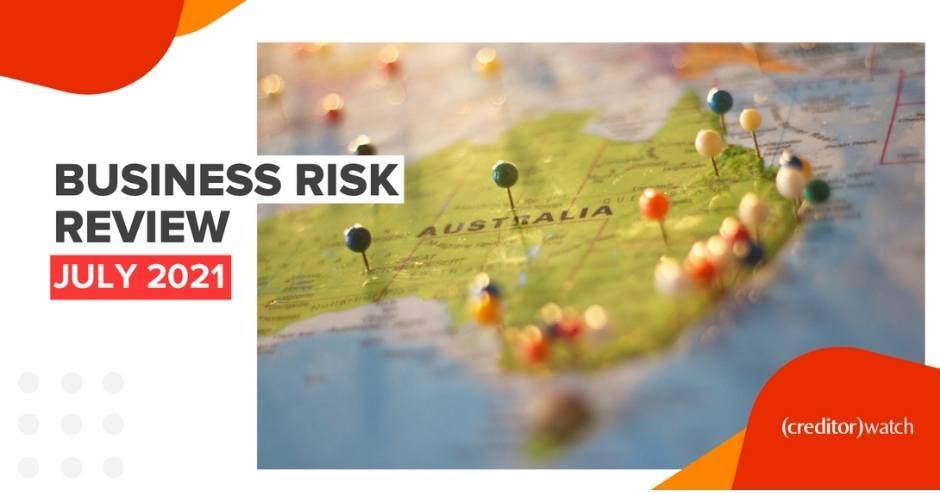The Australian economy in 2021 – where to from here?
- 2021 should be approached with caution – put into perspective, anyone in business will quickly need to learn the art of taking risks. Being averse to taking a risk could see viable businesses become redundant very quickly.
- One of the key challenges is calculating that risk and ensuring that we don’t get bogged down in the inevitable negatives to the extent that we fail to adequately celebrate the signs and evidence of economic recovery.
- It’s a given… there WILL be an explosion in business insolvencies and court actions; likely a two-year process at best.
- What is emerging through CreditorWatch data is that after government support has ended, it will be important to keep a close eye on how credit conditions are shaping up for small and medium sized businesses.
- A substantial number of businesses will emerge from COVID-inflicted 2020 leaner and meaner, more efficient, and more creative. A considerable number of businesses will likely flourish in 2021.
In 2020 the After Dictionary.com Peoples’ Choice award for ‘word of the year’ was ‘unprecedented’. Oxford chose not to pick a word because 2020 was ‘a year which cannot neatly be accommodated in one single word’. That about sums it up.
To say at the end of the first three weeks of 2021 that the economic, social, and geo-political environment is extremely fluid is a gross understatement. Perhaps the next word will be ‘uncertainty’ – if you need to have a horizon, it helps if you can see one. Right now, nobody can. That does not mean that we should lose sight of the positives.
We have entered 2021 on a considerably firmer economic platform than was feared, as was very conspicuous in the updates we received in December last year.
From retail sales to consumer confidence, the CreditorWatch Business Risk Review to Gross Domestic Product (GDP), building approvals to the volume of residential property transactions, the economic news released over the course of December 2020 was almost universally positive. That trend has continued in January.
This was reflected in the government’s Mid-Year Economic and Fiscal Outlook (MYEFO) released in mid-December. There was a range of improved forecasts compared to the October 2020 budget, including upgraded GDP forecasts and the unemployment rate expected to peak at a lower level than initially feared and to be back at pre-COVID levels in four years. The equivalent timeframe following the 1980’s recession was six years, for the 1990’s recession it was ten years.
On a more sombre note, the MYEFO also highlighted that Australia, like the rest of the world, has accumulated a massive amount of deficit and debt, which our children will be paying off as well as us. Australia’s level of (gross and net) debt is not expected to peak until 2023/24.
There was nothing we could ever do about that. We had to throw everything we had at the worst economic conditions since the Great Depression. The Reserve Bank of Australia (RBA) did that, so too did the federal government and state/territory governments.
Industry impact in 2021
In 2021 it is important to look through this inevitability and focus on the positives for the Australian economy. GDP will grow, for example. The housing market should continue to fire up, boosting consumer confidence along the way. The retail sector should flourish because consumers are cashed up, while the hospitality and entertainment sectors should (hopefully) resume same resemblance of normality (whatever that may look like) post the latest lockdowns.
When it comes to the business sector a key positive is the absence of a ‘cliff’. Through much of 2020 it appeared as though there would be a flood of insolvencies once government support was removed. CreditorWatch data suggests that is now unlikely. That is not to ignore the fact that the business landscape has changed and will never look the same as it did pre-COVID.
Let’s take the airline and hotel sectors. Overseas travel is still a long way off. The new business dynamic of working from home will crimp domestic business travel. Qantas CEO, Alan Joyce reckons the impact won’t be as bad as many fear. I tend to agree, but we won’t get back to pre-COVID volumes. Less business traffic means lower demand for hotel rooms and related demand for cafes, bars and restaurants.
It is likely that the work from home concept sticks to an extent that it has an adverse impact on the demand for food and drink in CBD’s and major hubs such as Parramatta and Geelong. That’s before we get to office demand, the transportation industry and so the list goes on. Last year we confronted the unimaginable; this year we confront the consequences, together with the on-going tragedy of the prevalence of COVID-19 in many countries around the world.
It would be nice to say that in 2021 the adverse economic and social consequences for Australia will only be at the margin, but they won’t be. They will be significant. It will be important to observe what patterns emerge for all sectors and regions as we move through the year. CreditorWatch data will provide an important barometer of the challenges, as well as opportunities businesses face in a highly uncertain year.
Clocking the credit health of businesses will be especially important in the June and September quarters. The end of March will mark the closure of the three-month window businesses have to appoint a restructuring practitioner following the end of the Safe Harbour provisions on December 31st. Plus, the JobKeeper subsidy ends on March 31st.
After that, businesses are on their own and many Small and Medium-sized Enterprises (SMEs) will not survive. Many businesses have continued operating under the camouflage of government support but, sadly, are simply unviable with or without that support. That may sound harsh, but it is the commercial reality of the business landscape for some time to come. There will be an increase in insolvencies and court actions and that is likely a two-year process at best. What emerges through CreditorWatch data in the middle months of 2020 will provide a crucial insight regarding the base from which this process begins.
There is also a key positive to the business environment in 2021. A substantial number of businesses will emerge from COVID-inflicted 2020 leaner and meaner, more efficient, and more creative. In many instances business models have had to change. A considerable number of businesses will likely flourish.
As we hike the hills and valleys 2021 will represent, it will be crucial to find the right balance between celebrating the positives as well as confronting the setbacks. We need to have a year where we recognise the risks, but do not become risk averse.
What are the three biggest risks for 2021?
The first is that we experience further instances of a significant reigniting of COVID in Australia. The second is further escalation in trade tensions with China. The third is that we fail to adequately celebrate the signs and evidence of economic recovery.




